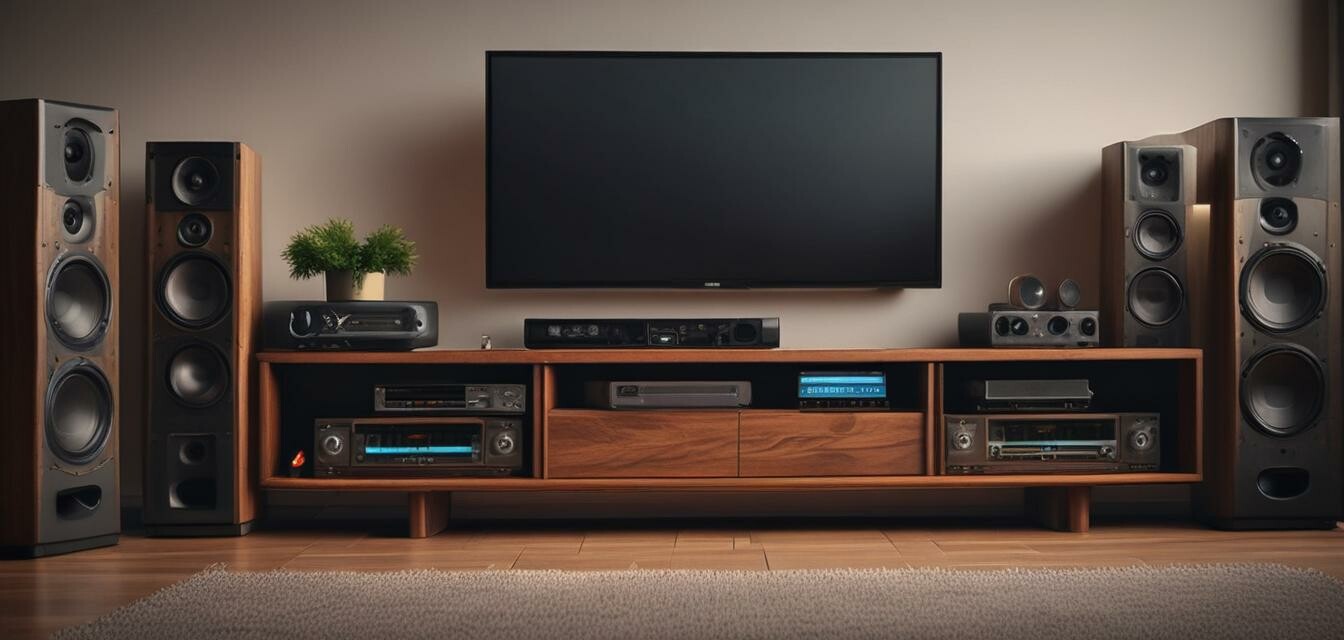
DIY Tips for Building Your Own Home Audio System
Key Takeaways
- Identify your audio needs and room size.
- Choose the right speaker type based on your preferences.
- Consider additional components like amplifiers and receivers.
- Pay attention to speaker placement for optimal sound.
- Budget accordingly while choosing high-quality components.
Building your own home audio system can be an exciting and rewarding project. Whether you’re a casual listener or an audiophile seeking to recreate the perfect sound experience, following the right steps can guide you in creating a custom setup tailored to your preferences. Below, we’ll explore essential DIY tips for designing and assembling your home audio system.
Understanding your audio needs
The first step in creating your home audio system is to assess your personal audio needs, including:
- The type of music you listen to.
- Your primary use for the sound system (for entertainment, gaming, etc.).
- The size and acoustic characteristics of your room.
Choosing the right speaker types
Depending on your audio preferences and space, here are some common speaker types you might consider:
| Speaker Type | Description | Best For |
|---|---|---|
| Floor-standing Speakers | Tall speakers that produce full sounds without needing additional support. | Large rooms, home theater setups. |
| Bookshelf Speakers | Compact speakers that can fit on shelves or stands. | Small to medium rooms, casual listening. |
| Subwoofers | Specialized speakers designed to produce low bass sounds. | Home theater, music with heavy bass. |
| Soundbars | Long, slim speakers that can enhance TV sound. | Compact spaces, home theater. |
| Outdoor Speakers | Rugged speakers designed to withstand outdoor conditions. | Patios, gardens. |
Essential components for your audio system
In addition to speakers, you may need other components to complete your setup. Here are common additions to keep in mind:
- Receiver: Acts as the control center, connecting all audio components.
- Amplifier: Boosts the audio signal to enhance sound quality.
- Media Player: For listening to music, movies, and more.
- Cables and Accessories: Don’t forget high-quality speaker cables and connectors.
Speaker placement for optimal sound
The configuration of your space will impact the sound quality you experience. Consider the following tips:
- Place floor-standing and bookshelf speakers at ear level when seated.
- Keep a distance between speakers (about 6 to 10 feet) for better stereo separation.
- Position subwoofers near walls for enhanced bass response.
- Avoid placing speakers in corners to minimize unwanted bass buildup.
Budgeting your audio system
When building your home audio system, it’s essential to set a budget. Here are a few tips to manage your costs effectively:
Budgeting Tips
- Set a total budget and stick to it.
- Research and compare prices across multiple retailers.
- Consider purchasing refurbished or used components for savings.
- Buy components gradually to spread out costs.
DIY assembly tips
As you assemble your audio system, keep these DIY tips in mind:
- Read manuals thoroughly for each component.
- Label cables for easy identification during setup.
- Test components individually before assembling everything.
- Seek online tutorials or forums if you encounter any complications.
Conclusion
Building your own home audio system can be a fulfilling project that ultimately enhances your listening experience. By understanding your needs, selecting the right components, and effectively budgeting, you can create a space filled with rich sound tailored just for you. For more insights into different speaker types, check out our other articles on buying guides, or explore Bluetooth speakers for wireless options!
Pros
- Customized sound experience tailored to personal preferences.
- Cost-effective as you can prioritize components based on your budget.
- Creative freedom to design your audio layout.
Cons
- Requires time and effort for research and assembly.
- Potential for mistakes if not familiar with audio equipment.
- Need for proper knowledge about audio systems for optimal results.
Immerse yourself in the world of sound with your very own custom audio setup. Happy listening!